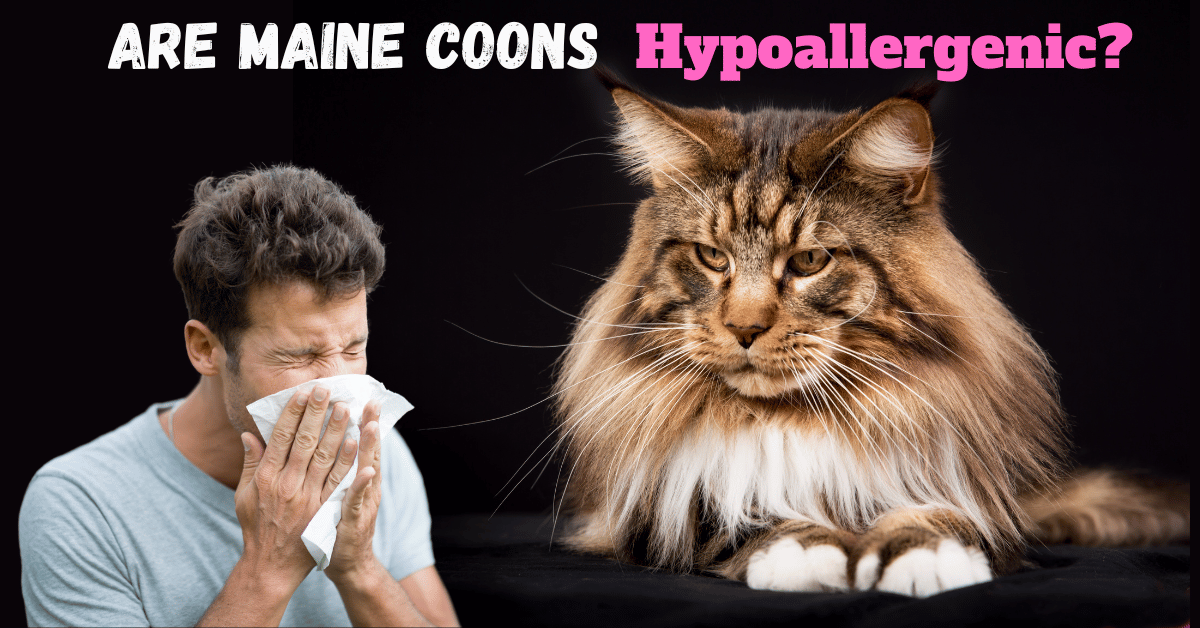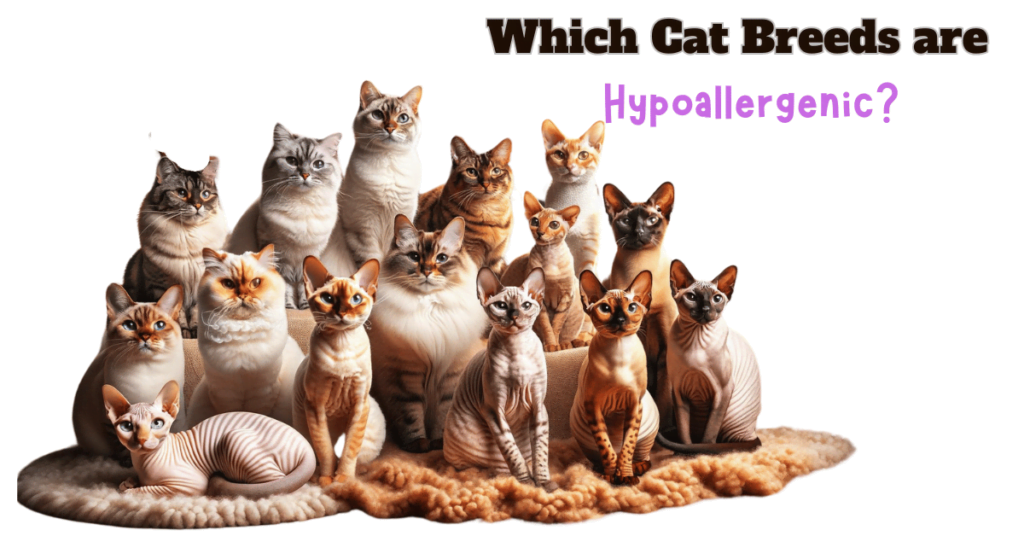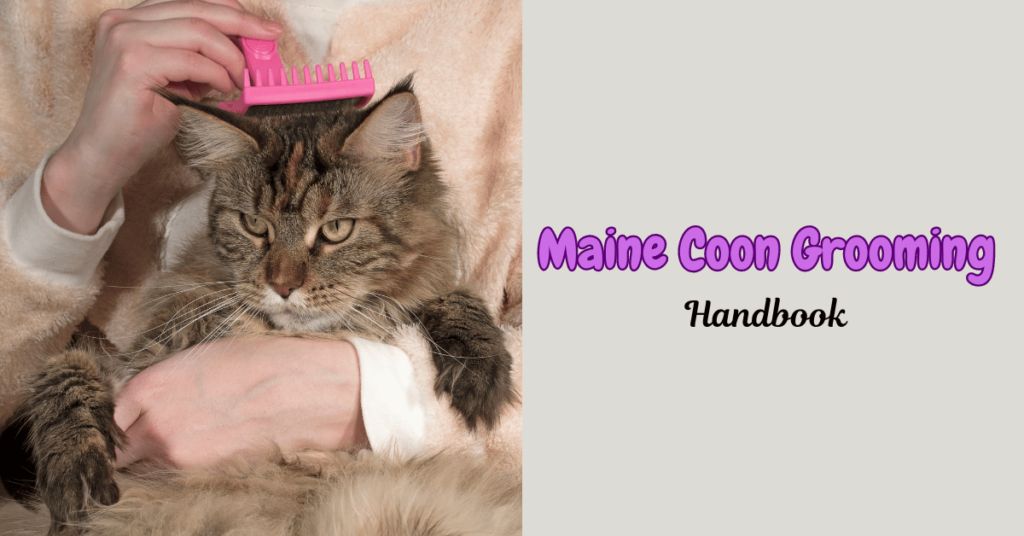This post contains affiliate links and I will be compensated if you make a purchase after clicking on my links.
Debunking the Myth: Are Maine Coon Cats Hypoallergenic?
Let’s cut straight to the chase: Maine Coon cats are not hypoallergenic. This misconception may stem from their resemblance to the lower-shedding, semi-hypoallergenic Siberian cats, but in reality, Maine Coons present a different story for allergy sufferers.
Maine Coons have thick, long fur that sheds throughout the year, posing challenges for allergy sufferers. As they shed, their dander—a common allergen—clings to the loose fur and disperses into the environment, intensifying allergy symptoms during peak shedding periods.
Furthermore, Maine Coon cats produce a protein in their saliva that triggers allergies. This becomes an issue when they groom themselves or show affection, as drying saliva releases allergens into the air. This means even without direct contact, their presence can activate your allergies.
For those with allergies, living with a Maine Coon may require additional management strategies, despite their charming personalities and striking looks.
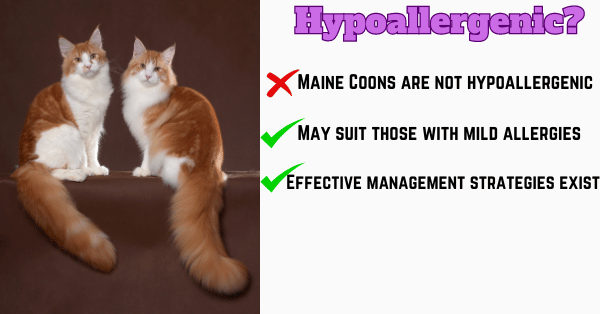
Clarifying the Term: What Exactly Does ‘Hypoallergenic’ Mean?
Hypoallergenic—it’s a term you might have seen on everything from earrings to skincare products, and yes, even pets. But what does it really mean, especially when it comes to our furry friends?
Hypoallergenic, in the simplest terms, means less likely to cause an allergic reaction. For pets, this implies that the animal carries fewer allergens—those pesky irritants that can trigger symptoms like sneezing, coughing, and itchy eyes. However, it’s crucial to understand that hypoallergenic does not mean allergen-free. No pet is 100% hypoallergenic, not even cats branded as such.
All cats produce some level of allergens, primarily through their skin and saliva. The main allergen is a protein which, when cats groom, sticks to their fur and dries. As this fur sheds and the dander spreads, it can trigger allergic reactions in sensitive individuals. Therefore, a cat’s likelihood to aggravate allergies is often tied to how much they shed and groom themselves.
Remember, all cats have skin, and thus, all cats produce allergens to some degree. Some breeds are simply genetically predisposed to produce fewer allergens or shed less, making them “less likely” to trigger allergies but not entirely safe for all allergy sufferers.
What Determines a Pet’s Hypoallergenic Traits?
Diving deeper into what makes certain pets, especially cats, more or less likely to stir up your allergies can provide a clearer picture of the hypoallergenic puzzle. It all comes down to a few key factors related to their fur and skin.
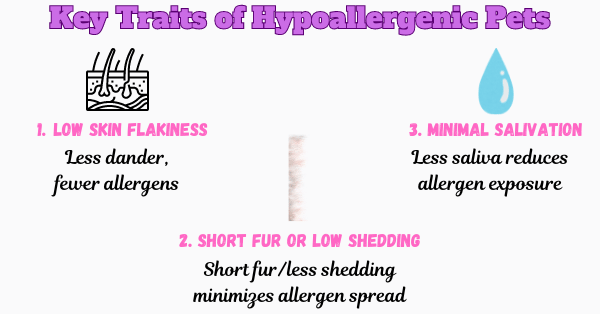
1. Skin Flakiness
Pets with flakier skin tend to shed more skin cells, or dander, which are microscopic and invisible. These cells fall off around the home, carrying allergens with them. This makes them more likely to trigger allergic reactions.
The infamous cat allergen, Fel D-1, primarily found in their saliva, also coats their skin. When cats groom themselves, they spread this allergen from their saliva onto their fur, amplifying the spread of allergens as they shed.
Fact: While cats also produce allergenic proteins like Fel D-2 and Fel D-4 found in their urine, saliva, feces, and other bodily excretions, studies indicate that 80-90% of cat allergies are primarily caused by the Fel D-1 protein.
2. Fur Length and Shedding
Contrary to popular belief, long-haired cats are generally not less allergenic. In fact, because they groom often and have more fur to trap allergens, long-haired cats can be more problematic for allergy sufferers. It’s not just the amount of fur but how often it sheds that counts. More shedding means more airborne allergens.
3. Salivation
Cats that drool more can also be a concern since the Fel D-1 protein in their saliva is a potent allergen. Pets that drool less are generally considered better for those with allergies.
Typically, animals considered hypoallergenic share these traits:
- Short fur: Less fur means fewer places for allergens to latch onto and less grooming required.
- Low shedding: Reduces the amount of fur and dander that circulates in your environment.
- Minimal drooling: Limits the spread of saliva-based allergens.
Fact: Cats tend to trigger more allergic reactions than dogs partly because they shed significantly and often have dry, flaky skin. This frequent skin flaking increases exposure to protein allergens.
Recognizing Cat Allergy Symptoms: What to Watch For
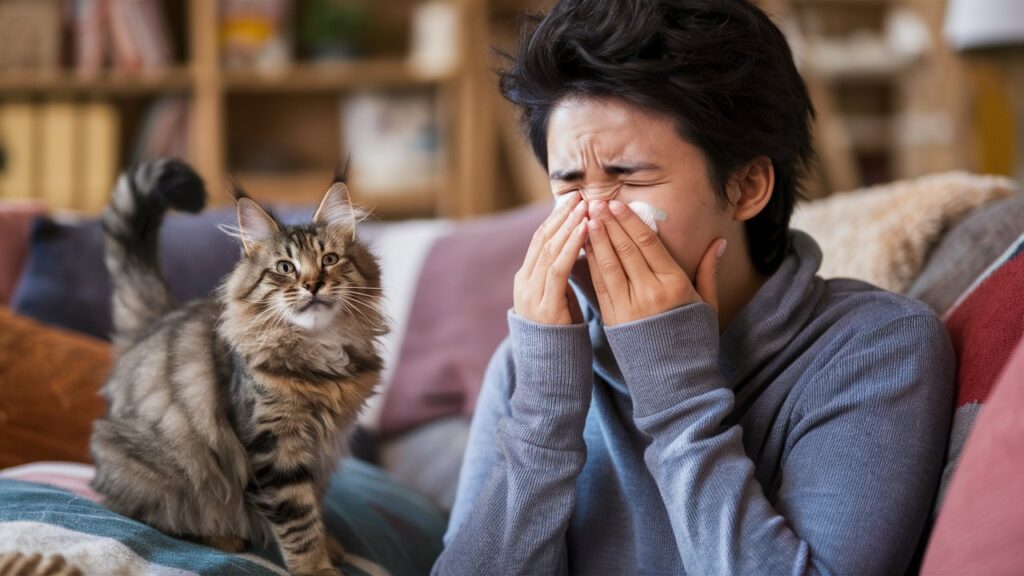
Since you’re curious about hypoallergenic cats, you might already be familiar with the telltale signs of allergies. Whether you’re experiencing severe reactions or just mild, occasional symptoms, it’s helpful to know exactly what to look for.
Here’s a quick rundown of common allergy symptoms that resemble hay fever, which could indicate a reaction to your feline companion:
- Coughing: Persistent coughs that seem worse around cats.
- Eczema: Itchy, red, or inflamed skin patches.
- Facial Pressure/Pain: A feeling of pressure or pain in the face after being near cats.
- Frequent Awakening: Sleep disruptions often related to breathing difficulties.
- Hives: Raised, itchy welts that appear following contact with a cat.
- Itchy Eyes: A relentless itch prompting you to rub your eyes.
- Itchy Nose, Roof of the Mouth, Throat, or Skin: Persistent itching in these areas after being near cats.
- Nasal Congestion: A stuffy nose that flares up around cats.
- Postnasal Drip: Mucus sensation that’s more noticeable in the morning.
- Red or Watery Eyes: Eyes that are irritated and water or turn red.
- Runny Nose: Constant sniffles that don’t seem to subside.
- Skin Under Eyes Swollen and Blue-Colored: Known as “allergic shiners,” these are indicative of severe allergic reactions.
- Sneezing: Frequent sneezing that increases in the presence of cats.
Choosing Hypoallergenic Cat Breeds: Options for Allergy Sufferers
If you’re only dealing with mild allergies, Maine Coon cats might not be a deal-breaker. Thanks to their thick fur, the dander—which carries allergens—is less likely to spread beyond the cat’s own coat.
However, if cat allergies are more than just a minor nuisance for you, opting for a hypoallergenic cat breed might be a smarter choice. While Maine Coon cats are undoubtedly gorgeous, their potential to trigger allergies can be a significant drawback for those more sensitive to allergens.
For those seeking safer alternatives, certain breeds produce less Fel D-1, the primary allergen in cats. The Siberian and Balinese, as well as the Sphynx and Devon Rex, are popular choices known for their lower allergenic impact. These breeds are often recommended for their reduced likelihood of causing allergic reactions.
However, it’s essential to bear in mind that no cat is completely allergen-free. Even hypoallergenic breeds can cause symptoms in particularly sensitive individuals, underscoring the importance of managing cat allergies proactively.
Effective Strategies to Manage Cat Allergies
1. Consider Medication Options
If you have mild allergies, over-the-counter allergy medications may help manage your symptoms effectively. For more severe allergy symptoms, it’s advisable to consult a doctor who may prescribe stronger medications. While these medications do not target the underlying cause of allergies, they can significantly alleviate the symptoms.
2. Groom Your Cat Regularly
Regular grooming is crucial. Brushing your cat often removes excess dander, while bathing helps wash away the allergenic proteins. Maine Coons, unlike most cats, generally enjoy water, making this task a bit easier and more effective.
3. Maintain Personal Hygiene
Always wash your hands after handling your cat to remove allergens that transfer to your skin. This simple step can prevent allergens from spreading around your home.
4. Limit Physical Contact
Try to reduce how often you touch your cat. Less contact means fewer allergens are transferred, which can make a significant difference in managing your symptoms.
5. Avoid Cat Licks
Since the protein allergen is present in cat saliva, avoid letting your cat lick you. This can prevent rashes and other allergic reactions.
6. Choose Your Cat Wisely
Female and neutered male Maine Coons generally have lower levels of Fel D-1, the primary allergenic protein in cats, compared to unneutered males. This makes them a better option for those sensitive to allergens.
7. Use Anti-Allergen Products
Spraying anti-allergen products in your home can help neutralize the dander and hair that cause allergic reactions. Use these sprays before vacuuming to enhance their effectiveness.
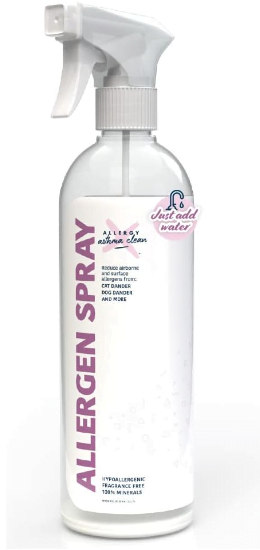
8. Keep Your Home Clean
Frequent cleaning is essential when living with a cat. Focus on removing allergens from surfaces and maintaining clean air. Use a HEPA filter in your HVAC system to capture fine particles effectively.

9. Restrict Cat Access
Set boundaries for your cat’s movement within your home. Restricting access to certain areas, especially bedrooms, can help minimize your exposure to allergens.
Conclusion: Answering the Question – Are Maine Coon Cats Hypoallergenic?
If you’re considering adding a Maine Coon to your home, an essential step is to visit the cattery. Meeting the kitten’s parents and spending time in their environment can provide valuable insights into the potential allergen exposure you might face.
This proactive approach will help you prepare for bringing a Maine Coon into an allergy-sensitive household, ensuring you can enjoy their companionship without undue discomfort.
Meet Sean, a fintech whiz with a penchant for pet purrs and blockchain buzz. After a decade of fintech feats, Sean’s tech talents leaped from ledger lines to litter lines, driven by a passion for pets and a vision for a more connected pet care community. With three critter companions as co-pilots, Sean launched this blog to share a treasury of pet-friendly tech tips and tales.

